K.M. Weiland's Blog, page 16
December 12, 2022
15 of My Favorite Books in 2022
 This year-end round-up of my “top books” is always one of my favorite posts to write. I always look forward to the retrospective of my year, not just because I get to remember everything I read, but also because my memories of my actual life are so intertwined with what I read. (When I’m trying to remember when something happened in my life, I will often ask, “What was I reading at the time?”—then I can look up the book in my reading log and find the date.)
This year-end round-up of my “top books” is always one of my favorite posts to write. I always look forward to the retrospective of my year, not just because I get to remember everything I read, but also because my memories of my actual life are so intertwined with what I read. (When I’m trying to remember when something happened in my life, I will often ask, “What was I reading at the time?”—then I can look up the book in my reading log and find the date.)
As I’m still in between permanent living circumstances, most of my books are in boxes. This has been a mixed blessing. For the first time in a very long time, I haven’t felt a subtle sense of overwhelm whenever I look at my (literally) five-foot TBR pile. Rather, I opened just one box of books and slowly worked through its contents, supplemented by whatever randomly came my way through PaperbackSwap, and, of course, whatever most tickled my fancy on Kindle.
Like so many other areas of my life during these past years, my reading life has felt rather under siege. I went from consistently reading 100+ books every year in my 20s to sometimes scraping into the end of the year with under 40 books. For a while there, I just didn’t feel like reading (which disturbed me almost as much as the fact that I also didn’t feel like writing during that time). Thankfully, many things have started to shift for me this year, and the desire to read (particularly fiction) has returned to me. This has been my most prolific reading year since 2016.
It’s also been a year in which I’ve just had fun. I didn’t pay much attention to most of my personal reading challenges (the classics, the Pulitzer winners, histories of countries). I read whatever seemed most interesting and pertinent. And now I am pleased to share with you some of my favorites from the year. I hope you will share some of yours with me as well!
Total books read: 69
Fiction to non-fiction ratio: 37:32
Number of books per rating: 5 stars (4), 4 stars (28), 3 stars (27), 2 stars (5), 1 star (0).
(Note: All links are Amazon affiliate links.)
Writing Books The Storytelling Animal by Jonathan GottschallNot quite a “writing” book, but a deeply interesting and informative look behind the curtains of why the human brain seems to be so wired for interacting with stories—and therefore why stories are of such importance. Some of the examples are a little gross-out or juvenile on occasion, but overall I find it a well-considered examination (more questions than answers) of our relationship with story.

Maass is never a disappointment. One of my favorite things about his writing on writing is that he brings as much heart to the table as he does how-to. He is a powerful proponent for “stories that matter,” and as always he does an excellent job sharing his experience as an agent in a way that helps writers write more efficiently and knowledgeably, but also more passionately.

This is a thoughtfully engineered approach to creating comprehensive and cohesive fictional magic systems. Overall, a super-helpful tool, complete with fleshed-out examples from popular stories in different speculative genres.

Solid and practical advice about building and maintaining a long-term authorial life of quality—from two long-time professionals who know what they’re talking about and thoroughly cover all possible subjects with candor and approachability.

Bird’s first book Secrets of Story instantly became one of my favorite writing guides. This follow-up dives under the water to take an even more in-depth look at the iceberg of character development. Meticulously researched and brimming with examples, it offers advice that is both precise and actionable. It reveals the genre-spanning patterns of memorable and resonant characters in a easy-to-access reference format that makes for both fun reading and a great tool to keep on your desk for easy thumb-through inspiration.

I adore Pratchett. Or maybe I just adore Captain Carrot.  Regardless, Pratchett’s genius is on full display here in yet another entry in which he somehow manages to write a book that is “light reading,” low-brow comedy, good-natured affirmation of humanity, and high-brow philosophy all at the same time.
Regardless, Pratchett’s genius is on full display here in yet another entry in which he somehow manages to write a book that is “light reading,” low-brow comedy, good-natured affirmation of humanity, and high-brow philosophy all at the same time.

Such a lovely book. Wonderful characters, beautiful romance, great western vibe. Deep and heart-wrenching story. Non-formulaic, but kept my attention throughout.

I adore the characters in this one and their story. In some ways it’s my favorite of O’Connell’s books (really, they’re all great once you get past the covers). I’ve read the good bits over at least a dozen times probably, even though as a whole it is also one of her slower and perhaps less well-structured books.

Very lovely Regency novel, with a deeply likable and realistic strong and silent hero. Beautiful love story.

Ryan’s Blood Song is one of my all-time favorite books—unfortunately marred by two sequels in which I was beyond disappointed. When I stumbled onto a duology he wrote as a follow-up to the original trilogy and the reviews promised it fixed the problems from the sequels and returned to all the good stuff from the first book, I had to give it a try. I’m glad I did. It’s not the first book, but it’s also not the sequels. Although it takes a bit to get going in the beginning, this is a solid and interesting fantasy that kept me wanting to read more. It answers the question of what happened to Vaelin’s love interest (who totally disappeared in the sequels), while putting the attention squarely back where it belongs: on Vaelin and his sole POV. I’m happy again. 

I think this book just changed my life. Most of the information in it was stuff I’d already intuited or learned elsewhere, but the way it was framed here under the label of “HSP” (rather than just “introversion”) made something finally click about how I experience life. It helped me reframe many of the things I’ve struggled with all my life or made “wrong” about myself. Gives me a much different perspective moving forward.

I have long enjoyed Sarah Clarkson’s writings; most of her books have been life-changing experiences for me. I was curious if I would feel the same about her sister Joy’s writings, and I’m happy to find that I do. Joy’s style and message is very similar to her sister’s, underlined by the idea that it is necessary for people to decide upon and live out “their own stories.” Earnestly honest, engaging, plucky, and heartfelt—there is much goodness to be found in this fast read of nine essays on the challenges to (and for) being happy in a difficult world.

It seems wrong somehow for me to give this five stars. After all, I didn’t love it. It was a painful and often difficult read. But without question, it is a book that hugely impacted me, that reflected back to me some of my own difficult experiences growing up in the stay-at-home-daughter culture, and that by the end felt both sobering and empowering.

This is a very readable, often critical, but ultimately loving exploration of Portuguese culture and history.

I have been a fan of Riso and Hudson almost since the beginning of my Enneagram journey. This one is probably more accessible than their classic Personality Types, with the emphasis here being more on positive growth rather than potential devolution. The chapters on the nine types are all solid, as expected, with wonderful guidelines and exercises for bringing awareness to each type’s ego “projects” (as they call them). The opening and closing chapters are gold in themselves, offering different models both for theorizing more deeply about the Enneagram itself and the personal growth journey in general.
>>Click here to read about how to use the Enneagram to create character arcs.

And if all these goodies aren’t enough to fill your To Be Read pile this year, here are a few more! 
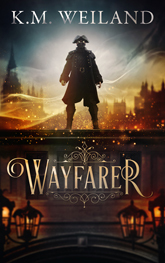
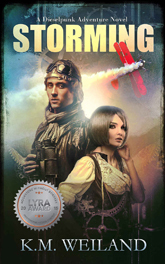

 Wordplayers, tell me your opinion! What were your top books of 2022? How many books did you read? Tell me in the comments!
Wordplayers, tell me your opinion! What were your top books of 2022? How many books did you read? Tell me in the comments!Click the “Play” button to Listen to Audio Version (or subscribe to the Helping Writers Become Authors podcast in Apple Podcast or Amazon Music).
___
Love Helping Writers Become Authors? You can now become a patron. (Huge thanks to those of you who are already part of my Patreon family!)The post 15 of My Favorite Books in 2022 appeared first on Helping Writers Become Authors.
December 5, 2022
What Are the Best Places to Write? 15 Tips to Create the Perfect Writing Space
 I admit it. I drool over Pinterest pictures of dreamy libraries and studies. Sometimes I google “writer’s offices” for inspiration about the best places to write, in search of that perfect writing space that will magnetize me to my desk and make me want to stay curled up with my work-in-progress for endless hours of storytelling.
I admit it. I drool over Pinterest pictures of dreamy libraries and studies. Sometimes I google “writer’s offices” for inspiration about the best places to write, in search of that perfect writing space that will magnetize me to my desk and make me want to stay curled up with my work-in-progress for endless hours of storytelling.
Of course, it doesn’t really work that way. Even though I’m a neatnik sort of person who enjoys interior decorating, my office experiences never quite look like the Pinterest version. There’s dust, there’s crumbs. Even worse, there are distractions. There’s, you know, the Internet. And no matter where I write or how I design my writing space, there’s always the reality that writing isn’t actually all that glamorous.
But that’s good news, actually. The very fact that writing does not require a high-maintenance setting means we can, in fact, do it anywhere. As nice as a study lined with bookcases of leather-bound first editions might be, or a little desk on a porch overlooking a beach—these aren’t necessarily the best places to write for most of us. After all, the best place to write is any place we actually do write.
So how can you optimize your writing space to help you get in the zone and stay in the zone? Colleen F. Janik brought this up recently:
I would love to hear a discussion of what the perfect writing area looks like, one that draws you there every single day. I have an office with a desk near the window, which I thought was perfect. But it’s not. I’ve made a very crafty, pretty memo board to put all my notes. That didn’t do it. I collected some great black and white World War I photos and had them framed and matted and put on my wall. That was good for a while.
I guess what it comes down to is that my characters become strangers to me and I am barred from entering the land where they dwell. How can I maintain that close relationship with these humans I so lovingly created?
Now, first of all, I’ll admit we can sometimes blame our external settings for writing blocks that are the result of other problems—whether personal issues like exhaustion or burnout, lack of motivation, or just good old plot block. But certainly our space can play a role.
Because I’ve experimented quite a bit with different writing spaces over the years, this topic immediately tickled my fancy. Today, I thought I’d share what I’ve learned in optimizing my own space.
TLDR: Honestly, my single biggest takeaway is going to be that what’s best on one day may not be best on the next day. Although it’s nice to have a dedicated writing space set up just how you like it, using your imagination to create flexible options might be the best solution.
5 Ingredients to Create Your Optimal Writing SpaceSome writers can write anywhere. Some are particular. Some prefer silence. Others prefer background noise. There is no one perfect formula that suits all of us. But there are some common factors we can each consider in tweaking our available spaces to support us in our writing goals. Here are my top five.
(Please note that some of the links to recommended products are Amazon affiliate links.)
1. Optimal LightingLighting is a powerhouse contributor to ambiance and mood. Consider whether you feel more inspired on bright, sunny days or gray, rainy days. Although you can’t do anything about the weather, you can recreate lighting patterns within your space by choosing bulb wattage and tone (warm or cool) to help you get into the right mood.
You need to be able to see what you’re doing and to protect your eye health. (At the same time, you might consider blue-light glasses or a blue-light filter for your computer to help with the glare.) The right desk lamp can make a huge difference in controlling writing spaces that otherwise offer limited options for change. Even just adding candles (preferably soy or beeswax to avoid air pollutants) can raise the vibe of your room and signal to your brain that it is now entering “writing space.”
If you can, you’ll also want to consider your proximity to a window. For a while, I had a desk that faced a gallery of windows. On the one hand, I loved it. But aside from the distracting squirrel that liked to dive-bomb off the roof, I also dealt with major glare for a few months in the early winter when the sun hit the windows just the wrong way. Depending on the orientation of the room, putting a window at your back can also be problematic, since the sun may then glare directly off your computer screen.

Lighting is crucial for creating the best places to write, but facing your desk to a window offers pros and cons to consider.
2. PrivacyDesired degree of privacy is subjective. Some writers do their best work in crowded spaces, such as trains or restaurants. But if you get distracted easily or lose your train of thought when interrupted, you’ll probably do best in a closed-door environment where you can filter out visitors—or at least slow them down.
3. Visual and Auditory ControlBeing able to control noise—both visual and auditory—can be important. Some writers prefer silence; some prefer music; some like the TV on in the background; some like people talking around them. Whatever the case, you want to be able to “turn it on” when you’re ready to write. Music has always been key for me. My brain is so used to hearing certain types of music when writing that I have a hard time dropping in without it.
Visual noise can also be important. Some writers thrive in cluttered spaces; others prefer clean minimalism. Either way, you’re looking for efficacy, not aesthetics. Although a Pinterest-worthy office can be gratifying, if it interferes with grounding in and writing, then it’s not worth it.
4. Comfort and ErgonomicsBy the same token, value comfort over style. Make sure your desk, your chair, and your computer are the right size for your body and ergonomically placed. If your writing space looks great, but you hurt when you spend time there, you’ll end up writing in the living room or the kitchen instead—or, worse, not writing at all.
5. Availability of Tools and ResourcesFinally, you’ll want a space that keeps all your most-used tools and resources at your fingertips. This might mean bookshelves or files. But it can also mean having all your files available on your computer or in the cloud, so you can access them easily without having to break your train of thought.

Set your writing space, so you have what you need within easy reach.
5 Ideas for Awesome Alternative Writing SpacesThe above ideas cover the standard writing space, the sort that usually comes to mind when we think of a writer’s office. But what if the “standard writing space” just isn’t working for you? What if, like Colleen (and me, on many an occasion), you show up at your optimized desk—and you just can’t settle in?
As much as I love a functional office, the following five alternative ideas are actually some of my favorite places to write. For me, they’re not feasible or even preferable all the time, but whenever they’re right, they’re right. I’ve done some of my best writing by leaving behind my designated writing space.
1. Writing OutsideThis is my all-time fave. When the weather isn’t too cold or too muggy, I like to take my writing into the wild. I’ll set up a little bistro tale outside, maybe on my front porch or maybe in a little nook in some trees, put my coffee in an insulated mug, and head out. I’ve written outside as late as November (with the help of gloves and a down vest), until my fingers got too cold to hold the pen.

One of the best places to write is… outside! I take my iPad with Scrivener notes, insulated coffee mug, outline notebook, and ergonomic pen—and I’m ready to go!
Being outside is both grounding and refreshing. I love being surrounded by trees and critters while I write, even if I’m not paying much attention. More than that, isolating myself from my normal life inside the house, including my office desk where I do “business stuff” and Internet connectivity in general, almost always sends me straight into story headspace.
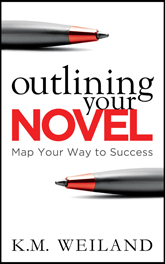
Outlining Your Novel (Amazon affiliate link)
One thing I will note is that taking my writing outside has always worked best when outlining, since I do that in a notebook. When it’s time to work on the first draft, I’ve tried typing on various tools (see #4 below), but none of them are ergonomic enough to stave off back and neck pain.
2. Writing in the “Dark”When the autumn nights get cold and long and I can’t sensibly take my writing outside any longer, my next best choice is to make my indoor writing space as dark as possible. I will often put on just a single light spotlighting my desk (or fairy lights) to create a small cozy space. The sense that it’s just me and my writing existing in this little island of warmth helps me zoom in and focus.
3. Writing at a Dedicated DeskThis is one I haven’t yet been able to try, but it’s on my bucket list. Sooner or later, I need my computer in to be able write, whether it’s because I need an ergonomic setup for my keyboard or because I need access to all my notes. But because the computer also happens to be connected to the Internet, not to mention connected to all my other notes (about business or personal stuff), it’s also the single greatest distraction to my writing.
This is why, at some point, I plan to create a second writing space with a smaller desk that is ergonomically favorable for writing by hand and a second computer that contains only writing programs and notes. The idea is not only to remove myself from all the other distractions at my work desk, but also to train my brain to recognize this dedicated space as writing space (rather than a space for also checking email or blog comments, or browsing YouTube or Pinterest, or shopping for socks or toothpaste…).
4. Writing With Tools Other Than Your Regular ComputerEven when you don’t have the choice to create a writing space that is separate from the rest of your digital life, you can still distance yourself from all the distractions of your computer by utilizing other tools. This is one of the main reasons I enjoy writing my outlines longhand in a notebook. Even if my computer is within reach, the act of writing rather than typing puts a degree of separation between my mind and all the other things I could be doing on the computer.
I’ve also played around with digital typewriters, including the old AlphaSmart and the FreeWrite. The big drawback to both is that they aren’t particularly ergonomic. Even if you position the keyboard at an ideal height for your wrists, you still have to bend your neck to look down at the little screen. These tools can also be annoying when you’re trying to reread or edit what you wrote. I don’t use them frequently, but I’m glad to have them for those occasions when I either need a break from my computer and/or want to take my typing on the go.
5. Writing in PublicFinally, you may want to try taking your writing on the road with you. Writing in cafes and other public spaces is part of a long literary tradition. This isn’t my favorite approach, but I’ve tried it with success on several occasions when writing at home just wasn’t working for me and I needed a change of scenery. Earphones and the same tools I use when writing outside are all I need.
5 Tools to Help in Less Than Optimal Writing SettingsNot all of us get to write in those swoony offices/libraries on Pinterest. Even if we do have the chance to create a writing space that is exactly how we want it, we can sometimes find that, in fact, it isn’t as ideal as we imagined. So in the interest of #reallife, let’s round out the discussion with four simple tools that can help us block out distractions and zone in on our writing even in situations that are not the best places to write.
1. Sound-Proof HeadphonesCan’t beat this one. Whether or not you’re into listening to music while writing, sound-proof headphones can be a WIP-saver. They’re also great for when you take your writing out in public because you want the company but not the noise.
2. Do-Not-Disturb AppsIf you find your greatest distraction when working on the computer is… the computer, any one of a host of do-not-disturb apps can help you create a writing-safe space on your computer. When writing, I always turn my phone to airplane mode and will often disable my Internet connectivity altogether (it’s off right now). I have previously used the app Freedom to schedule Internet blockages at certain times and from certain websites. Lately, I’ve been looking into Forest, which helps you track your progress, as well as giving you the incentive of real-life planted trees.
>>Click here to read Creativity vs. Distraction: 13 Tips for Writers in the Age of the Internet
3. CornersIf your space is particularly limited and you’re unable to access privacy, you can always do it the old-fashioned way and find a corner. For me, putting myself in a small space is helpful in itself. Facing into the corner will also help block out visual disturbances (as well as cluing in others to the fact that you really don’t want to talk to them right now). Add in sound-proof headphones, and you may not even know you’re not alone.
4. HoodiesDon’t have a corner handy? Grab your hoodie and blinker yourself from distractions. This isn’t foolproof, but it does give off those “leave me alone” vibes that come in handy for all writers sooner or later.
5. Flamethrower and MacheteOkay, just kidding (mostly). But my metaphorical flamethrower and machete (plus liberal threats) have always worked wonders for me.
***
Creating the best place to write will be an entirely subjective experience for each one of us. We each have to get real with ourselves about which elements help us write and which ones don’t. From there, we must work with what’s available to us in our personal spaces and immediate vicinity. The perfect writing space may vary day to day depending on your mood. What’s important is coming up with a suite of one to three feasible options you can easily slide into without much thought or preparation whenever it’s time to start writing.
Wordplayers, tell me your opinions! What are your best places to write? Tell me in the comments!Click the “Play” button to Listen to Audio Version (or subscribe to the Helping Writers Become Authors podcast in Apple Podcast or Amazon Music).
___
Love Helping Writers Become Authors? You can now become a patron. (Huge thanks to those of you who are already part of my Patreon family!)The post What Are the Best Places to Write? 15 Tips to Create the Perfect Writing Space appeared first on Helping Writers Become Authors.
November 28, 2022
The Best Christmas Gifts This Writer Has Ever Received
 Buying that perfect Christmas gift is always a challenge, but if someone on your list this year is a writer (or if that writer is you), here are some ideas straight from my top-ten list of personal faves. The following were gifts from thoughtful family and friends who know I’m a writer and chose accordingly. (Admittedly, not all of these were Christmas gifts, and actually a few I bought for myself, but who’s keeping score…?)
Buying that perfect Christmas gift is always a challenge, but if someone on your list this year is a writer (or if that writer is you), here are some ideas straight from my top-ten list of personal faves. The following were gifts from thoughtful family and friends who know I’m a writer and chose accordingly. (Admittedly, not all of these were Christmas gifts, and actually a few I bought for myself, but who’s keeping score…?)
(Some links are Amazon affiliate links.)
1. ScrivenerI’ve long loved this all-purpose writing software, with its supreme adaptability and its myriad nooks and crannies for organization of scenes, chapters, and notes galore. I was psyched when the Scrivener 3 for Windows update finally came out last year, although I’ve yet to play with it much.
(If you’re looking for digital gifts for your fellow writer, there’s always my Outlining Your Novel Workbook program as well.)
2. Writer’s Digest SubscriptionStarting in my early twenties, my mom bought me a Writer’s Digest subscription every Christmas. Receiving and reading this magazine every month for many years was transformative for me both as a writer and a professional.
3. Writing BooksWriting books are always on my wishlist. I focused the entirety of last year’s Christmas-gift post on some of my favorite writing books, so I’ll just point you there again this year.
4. Thermos Coffee Travel Mug

In a period when I was taking my writing outside a lot (yes, in the winter), my dad bought me the best to-go coffee mug I’ve ever had. I swear the coffee gets hotter the longer it stays in this thing. Perfect for on-the-go inspiration in the great wintery outdoors.
5. Swannies Blue-Light Glasses

These were a present from me to me. After a terrible eye strain two years ago, I upgraded my anti-blue light glasses to these babies (and added a hardcore nighttime pair as well). For all those times when I’m not braving the chill to write outside, these keep me looking pretty scholarly at the computer.
6. Ergonomic Pen

For a cheap stocking stuffer-priced gift, this thing has stayed with me longer than any pen I own. Because I prefer brainstorming my outlines longhand in a notebook, I love this pen for protecting me from hand cramps and keeping me going. It goes through ink refills pretty fast, but mine is ink-stained and well-loved at this point.
7. Skyworld Album by Two Steps From Hell

Okay, so this was actually a gift I bought for someone else, but I loved it so much I had to get it for myself as well. Two Steps From Hell is pretty much my all-time favorite writing music, and this album is one of my tops. It was pretty much the soundtrack for my gaslamp fantasy Wayfarer.
8. Eccolo World Traveler Journals

I really like Eccolo’s “World Traveller” notebooks/journals, especially the legal-sized variety. The lines are spaced just right—not too tight, not too loose—to contain my wild scrawl. Plus, I like the beautiful covers and their silky-smooth texture.
9. Fingerless GlovesMy brother-in-law got me a pair of these for his first Christmas with my family. They’re necessary winter staples for me when typing (or, you know, writing outside).

10. Antique Typewriter

In some of my photos around social media, you may have noticed my gorgeous old Smith & Corona typewriter. I can’t tell you where to get one (other than eBay maybe), but this is probably my all-time favorite gift. My brother found it for me in Goodwill long ago, and despite the fact that it might weigh more than I do, I’m still hauling it around. It sits on my bookcase in my office right now.
***
For more ideas, you can also check out my own series of writing books. Merry Christmas, everyone!
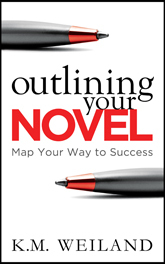
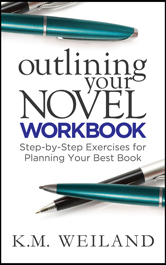

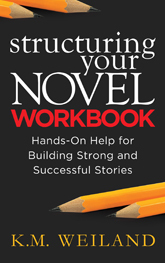
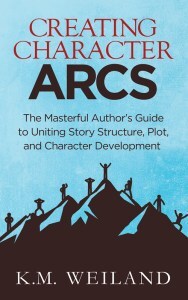
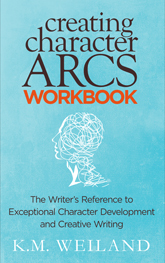
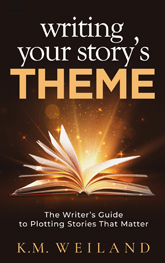

For more Christmas gifts for writers:
17 Eco-Friendly Gifts for Writers This Christmas20 Unique Gifts for Writers This ChristmasWordplayers, tell me your opinion! What are the best writing gifts you’ve ever received for Christmas? Tell me in the comments!The post The Best Christmas Gifts This Writer Has Ever Received appeared first on Helping Writers Become Authors.
November 21, 2022
Happy Thanksgiving, Wordplayers!
This week, in the U.S., we celebrate Thanksgiving.
I find I have much to be thankful for this year. I’m thankful for the work I’m able to do, for all of you who read this site and my books, for your support and encouragement and confirmation in so many ways.
I say this every year, but I truly would not be able to do what I do without all of you. I thank you for showing up, for reading and listening, for finding what I’m sharing meaningful, for sharing your own passion and wisdom in return, for offering support through Patreon or by purchasing my books.
This year, I’m also grateful for all the healing I’ve done, in so many ways—something I’ll talk about a little more in my New Year’s post.
I am most thankful to be able to share one exciting little snippet of my life with you today. For those of you who have been following along for the last few years, you’ll know what a big deal this is:
I am grateful to be able to once again say… #amwriting!

More on that soon too. (Although I will just say, for those who are wondering, that it’s not a Dreamlander sequel. Check back after the New Year for more info.)
Wherever you are, I hope your day, week, year is full of blessings large and small, tangible and intangible, and—always—lots of stories.
Happy Thanksgiving!

The post Happy Thanksgiving, Wordplayers! appeared first on Helping Writers Become Authors.
November 14, 2022
Master List of Answers to Most Asked-For Writing Topics on This Site
 You who read this site and participate in the discussions are an endless source of inspiration to me. This is true in many ways, but most literally in that when you ask deeply insightful questions, you often give me great ideas for posts about writing topics!
You who read this site and participate in the discussions are an endless source of inspiration to me. This is true in many ways, but most literally in that when you ask deeply insightful questions, you often give me great ideas for posts about writing topics!
A few months ago, I asked you all to tell me what kind of posts you’d like me to write in the future, and the response was tremendous. Thank you for all the great ideas! I have already posted on some of the topics you suggested and will continue to do so throughout next year.
As I’ve been going through the list of your questions, I’ve been noticing that quite a few are asking for topics I’ve already covered. Because the site is always welcoming new visitors and because, after 15 years and almost 1,600 posts, it is quite comprehensive, I wanted to take this opportunity to respond to some of these queries by creating an easy-to-scan list with links to articles I’ve already published on these writing topics.
>>See this post for more of the site’s resources that you may not know about.
Also, for those who are unaware, the site is very searchable. If you’re looking for a particular topic, just use the search bar. If you’re on a computer, this will show up at the top of the right-hand toolbar (just above my headshot).
If you’re on a mobile device, you’ll need to scroll down, almost all the way to the bottom (again, it will be just above my headshot).
You can also access articles by category (such as Characters, Dialogue, POV, etc.), using the drop-down menu entitled Categories, which you can find toward the bottom of the right-hand column (on a computer) or at the bottom of your screen (on a mobile device).
You can also check out “The Ultimate Glossary of Writing Terms,” an extensive list that includes both definitions and links to relative articles.
Now, without further ado, here are some of your questions and the posts that may help you answer them.
Rewriting to Adjust Word CountAnne: I’d like to learn how to rewrite/edit a large manuscript (115,000 words) into a tight 75,000 words.
5 Ways to Trim Your Book’s Word Count, Pt. 1 of 25 (More) Ways to Trim Your Book’s Word Count, Pt. 2 of 2sanityisuseless: How do you lengthen your novel? (I can’t seem to break even 20K on my novel.)
5 Fun and Easy Ways to Lengthen Word CountHistorical Researchbertram1414: I’d like to learn about historical research, tbh, but I don’t know where to look.
7 Easy Ways to Research a Historical NovelNovel Research: 12 Ways to Ace Your BookHow to Research Your Book Smarter, Instead of Harder5 Tips for Maximizing Your Novel ResearchSelf-Publishing and Self-EditingJason P: I’d love to see updated self-publishing info and more on self-editing.
15 Steps to Self-Publish Your BookThe 6-Part Process to Successfully Self-Publishing Your BookHow I Self-Edit My Novels: 15 Steps From First Draft to PublicationHow to Edit Fiction: Watch Me Correct My Own Story in Real TimeDeath Scenesconfidential writer: One thing that would be really helpful is if you wrote a post about how to write solid death scenes or scenes of a similar dramatic level without them being mellodramatic.
How to Kill a Character—And Avoid Hate MailHow to Write a Gut-Wrenching Tragic Scene—Thanks to One Surprising Detail!Action Scenesconfidential writer: Also, maybe something about how to write good action scenes (like chases, duels, etc).
How (Not) to Write Satisfying Action ScenesThe Key to Writing Good Action Scenes (Hint: It’s Not Just the Action)The Kung Fu Panda Guide to Writing Action ScenesHow to Write Realistic Fight ScenesHow to Keep Your Fight Scenes Interesting5 Keys to Writing Epic Battle ScenesHeroine’s Journey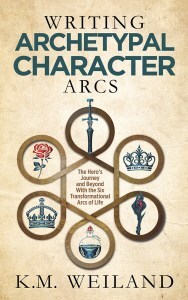
Coming this winter!
Elisabeth: First off, I love your blog! It has taught me so much about writing. I would love to read about the Hero’s journey, and the variations between male and female journeys.
How to Write Archetypal Character Arcs (full series) (and there’s a book coming out this winter, so COVER REVEAL! :D)Outlining Your NovelJoe Copeland: Right now, my biggest interest is organizing my novel project prior to writing. I have many things I like to refer back to while writing such as character lists, character biographies, major scenes, basic plot, basic backstory, etc. I’m fashioning a list of my favorite things, but I was wondering what things you like to have before starting.

Outlining Your Novel (Amazon affiliate link)
Rick: I would like to know how (i.e. what process and tools you use ) you organize your thoughts/ideas when starting to write a book. Do you start from a big picture overview and then identify the individual scenes, or do you start from the beginning of the story and go forward in time or ? I assume you create an outline, but how do you incorporate character arcs, key plot points, etc. into the outline?
Steve: I would love to hear more about the beginnings of the process. Most specifically going from a very rough idea to a plot line and story structure. Then how you go from a simple plot line to one that has sub plots and interesting twists.
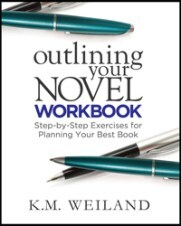
Structuring Your Novel Workbook
Book: Outlining Your Novel Book: Outlining Your Novel Workbook Software: Outlining Your Novel How to Outline Your Novel (full series)The Great Novel-Writing Checklist 6 Tasks You’ll Love Yourself for Checking Off Your NaNo Pre-Writing ListHow I Use Scrivener to Outline My NovelsHow to Use Your Outline When Writing Your First DraftPacingXavier Basora: Pacing. What is it and how you incorpoate it in stories.
Learn How to Pace Your Story (and Mind-Control Your Readers) in Just 8 StepsHere Are 5 Great Ways to Pace Your Story4 Pacing Tricks to Keep Readers’ Attention2 Simple Pacing Techniques That Grab Reader Emotions5 Ways to Use Pacing to Write a Powerful StoryToolsJohne Cook: I’m curious about your tools. There was a time you were using yWriter, what writing tools are you using in 2022?
The Professional Writing Resources I Use for All Parts of the Writing and Publishing Processes (I published this two years ago, but it’s still up to date with my process)Second Act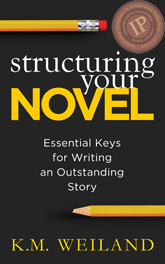
Structuring Your Novel (Amazon affiliate link)
Milin Joshi: Writing the 2nd act.
Understanding the Adventure World of a Story’s Second ActThe Secrets of Story Structure: The First Half of the Second ActThe Secrets of Story Structure: The Second Half of the Second ActCreating Stunning Character Arcs: The First Half of the Second ActCreating Stunning Character Arcs: The Second Half of the Second ActHow to Write a Flat Character Arc: The Second ActHow to Write a Negative Character Arc: The Second ActHow Story Structure Prevents “Saggy Middle” SyndromeWhat Are Pinch Points? And How Can They Make Your Book Easier to Write?ConflictArdra: Please write about CONFLICT.
There seem to be two types of conflict:
pleasurable to readhostile engagements.For instance nice conflict includes problem solving, convincing someone, battles, mysteries, any occasion that enables the MC to display skill in an interesting way etc
Hostile engagements are unpleasant to read and leave one tired. They’re mostly centered on people being horrible to each other, aggressiveness for its own sake, internal monologue that displays envy and incompetence etc.
Insecure writers (and I realized I do this as well) tend to jump into the hardest situation possible, which is typically about people being unreasonable and aggressive. This makes for very unpleasant reading and stupid characters.
How do I internalize writing nice conflict and keep on track with it?
Conflict in Fiction: What It Really Is and Why It’s Important to PlotStructuring Your Story’s Scenes: Options for Conflict in a SceneCreating Your Character’s Inner Conflict: Want vs. NeedHow to Create Meaningful Obstacles Via ConflictAn Easy Way to Notch Up Your Scene Conflict4 Places to Find Your Best Story ConflictLearn to Write Deep and Rich Story ConflictThe Pixar Way to Think About Story ConflictThe Four Different Types of Conflict in DialogueMost Common Writing Mistakes: One-Dimensional ConflictTheme
Writing Your Story’s Theme (Amazon affiliate link)
Amy: Can you write about how best to shape or mine ideas or theme into compelling stories
Book: Writing Your Story’s Theme Deepening Your Story’s Theme With the Thematic SquareWhat Is the Relationship Between Plot and Theme?4 Ways to Choose a Better Theme for Your BookHow to Write Unique ThemesRevisionGalynn D Zitnik: I am in the middle of revising my novel and it is so easy to get lost and confused. Do you have an efficient system for revising?
6 Tips for How to Organize Your Novel’s EditsYour NaNo Novel Is a Hot Mess! How to Edit Your Book5 Steps to a Thorough Book EditWriting Funny CharactersShelley Lea Frost: Hi Katie, thanks so much for all your wonderful advice. Your insight and the effort you put into helping others are much appreciated. Do you have any words of wisdom about writing witty characters? I love people with a sense of humour but struggle to make the jokes and repartee sound different. I only have a single small sad supply of wit and it won’t stretch enough to create characters with different voices. All my funny sounds the same. Should I continue to stalk my friends? They’re starting to look cross when I stick my phone in their faces every time someone laughs. Please give me some options. For the sake of my social life and my potential writing career.
How to Write Funny6 (More) Ways to Improve Your Book by Writing HumorHow to Write Funny DialogueThe Hilarious 2-Step Plan for Writing Humor in Fiction4 Ways to Write Meaningful ComedyDaydreamingPeter Samet: I’ve realized that I don’t daydream nearly as much as I used to. I partially blame my smartphone, which prevents me from ever getting bored, but also discourages one-on-one time with my brain. How important is daydreaming for writing, and how does one make time for it when one barely has time to write either?
What Is Dreamzoning? (7 Steps to Finding New Story Ideas)3 Ways to Learn How to Daydream BetterHow to Cultivate DaydreamsNovel DoubtsRiley G.: What do you do with a scene in a novel that you liked when you first wrote it, but don’t like so much when you reread it? And how do you know what to replace the scene with, or how do you know that a new idea to replace said scene is the right thing to replace it with? How do you deal with second thoughts when working on a manuscript?
Writing as the Art of Thinking Clearly: 6 Steps10 Steps for Working Past the “This Stinks” BluesWhy Every Story You Write Is a Guaranteed FailureDeciding Which Idea to WriteMiriam Harmon: Though, I used to have shiny object syndrome, now that I’ve gotten over it, I have more stories than I know how to write. Now I’m stuck wondering which of these stories I should focus on. Should I start with something easier or go for my best book idea, and which is my best book idea? Every time I try to narrow them down, I end up with ten or more stories that really deserve to be written, and I’m not sure how to choose which one to do right now. Any advice?
nick: I have so many ideas, how do I choose which idea to work on next? I’m just finishing up my first book, and it felt so pressing and all consuming for years, now I’m afraid I won’t feel that pressing importance again.
Betsy W.: Thank you for all that you create! How do you know when an idea is worth turning into a novel? Do you have a feeling about the general idea that tells you it’s enough for a novel? Or is there a list of questions you ask yourself about the idea to test it out? Thank you for the stories you tell and for all the ways you help writers.
7 Ways to Decide Which Story Idea You Should Write Next6 Ways to Find Your Best Ideas Before You Start Writing7 Ways to Decide Which Story Idea You Should Write NextNew Story Ideas Distracting You From Your Book? Find Out What You Should DoThe 6 Challenges of Writing a Second NovelSubplotsLorraine: How do you go about layering subplots into the main story? Do you write the main story first and then add in the subplots while you edit or do you include it in the story plan? I’m currently adding in a romantic subplot into my urban fantasy book. While there were elements during the editing process, it wasn’t until I was almost at the polishing stage I realized the romantic subplot didn’t have enough meat. Hence the question.
5 Tips for Organizing SubplotsCan a Character’s Arc Be a Subplot?How to Keep the Wrong Subplots From Sinking Your StoryTitlesAndrew Williams: I struggle enormously with decent titles. I can spend a year writing and editing something under a working title and still have no idea what to call it at the end. Do you have any advice on coming up with memorable, searchable titles for our writing projects?
17 Steps to a Reader-Grabbing TitleGet Your Novel Noticed with a Power-Packed TitleHow to Choose a Book Title That’s Perfect for Your Story AND Good Marketing!SubtextMurli: How to make subtext impactful?
The Only 5 Ingredients You Need for Story Subtext4 Ways to Amplify Your Characters’ SubtextHow to Write Subtext in DialogueFind Out if Your Prologue Is Destroying Your Story’s SubtextHow to Create Subtext by Letting Your Readers Fill in the BlanksSubtext in Dialogue: 5 Places Where Your Characters Should Stop TalkingSubtext: The Art of Iceberging***
Many of the posts listed here are comprehensive. A few are not, and I may return to these topics in more depth in the future. For now, thanks for the inspiration, and I hope you find some of the answers you were hoping for. If not, stay tuned!
Wordplayers, tell me your opinions! Are there any more writing topics that you’d like me to cover in the future? Tell me in the comments!The post Master List of Answers to Most Asked-For Writing Topics on This Site appeared first on Helping Writers Become Authors.
November 7, 2022
8 Tips for Dealing With Negative Reviews of Your Book
 If one of your goals as a writer is to be read, then sooner or later you will have to deal with negative reviews of your book. This could be as simple as a family member or beta reader telling you (tactfully or not) they didn’t like the book. Or it could be as painful as receiving multiple low-star reviews once the book has been published. Some of those negative reviews will have merit; some will not. Regardless, learning how to read them, accept them, and move on is a challenge all writers must face.
If one of your goals as a writer is to be read, then sooner or later you will have to deal with negative reviews of your book. This could be as simple as a family member or beta reader telling you (tactfully or not) they didn’t like the book. Or it could be as painful as receiving multiple low-star reviews once the book has been published. Some of those negative reviews will have merit; some will not. Regardless, learning how to read them, accept them, and move on is a challenge all writers must face.
A few months ago, when I asked what you’d like me to write about, one question that immediately popped out to me was from Sionnach, who queried not just about negative reviews but about “unfair” reviews:
How do you learn to live with reviews that are patently unfair? My last book had mostly good reviews. Two, however, were two stars who were upset about graphic content. I always include content warnings about violence and steam level. I write the first sentences of my blurbs to include words/phrases that suggest violence if it’s in the book.
I really don’t know what else to do. The steam level is similar to other books in my genre, and the violence/gore would barely receive an R rating if it were a movie. All I can think of is just live with the reviews, but it’s hard. I know writers are supposed to have thick skins, but I hate reviews that just seem unfair. They get in my head while I’m writing and alter things.
As writers, we write for many reasons, but two predominant ones are wanting to put something of ourselves out into the world and to have that something be received. As such, writing is a supremely vulnerable act. The fact that it is almost inevitably partnered with rejection at some phase only makes it more so—and our courage in doing it anyway even more boundless.
Certainly, I have received my share of negative reviews over the years. Some of them stung because they were a little too true. Others stung exactly because they were anything but true. Part of my arc as a writer, and a person in general, has been learning how to understand my own reactions to negative reviews, to manage the personal damage, and to mitigate future effects. To some degree, this involves improving as both a writer and a marketer. Mostly, it comes down to looking within and working on my own expectations and identities.
6 Possible Reasons You’re Bothered by Negative Reviews of Your BookIn a minute, I will share some tips about dealing with negative reviews of your book, based on what I’ve learned through my own experience over the years. But first, I want to examine a few different reasons why negative reviews of your book may be impacting you. Each scenario can have a slightly different effect on you and require a slightly different perspective in re-centering yourself.
1. The Reviewer Is Making Good PointsUltimately, the reason negative reviews of your book hurt is because they may be true. No author is perfect. Every story will legitimately deserve criticism of some facet.
Ironically, sometimes these are the sort of reviews that hurt the least. If you can recognize the validity of the criticism, at least you can do something about it. Even if it’s too late to correct the current book’s problems, you can at least learn from the advice and apply it to the next story.
2. The Reviewer Misunderstood the Book/Missed the Point EntirelyAs Sionnach noted, perhaps the most frustrating type of negative review is the kind in which the reviewer seems to have misunderstood your intentions as a writer, or even entirely missed the point of the story. In response to Sionnach’s comment, Sara K. wisely noted:
I can’t tell you how to live with unfair reviews. However, as someone who has read tens of thousands of Amazon book reviews, I can tell you that getting a small percentage of unfair reviews is inevitable. (By “unfair” I mean books which say in the description “this has x” and a reviewer complains “this book has x.”) You’re not alone.
These reviews are frustrating because, really, what else are you gonna do? You can work to refine your presentation to create the correct expectations, but you will always encounter people who failed to pick up on the clues, however overt.
3. The Reviewer Was CruelSometimes people are just mean. Even kindly worded negative reviews can hurt, but everything escalates when a reviewer’s language becomes personal, nasty, or even violent. Occasionally, these reviews can be easy to dismiss, when it’s obvious the reviewer is out of line and probably has a personal axe to grind that very likely did not originate with you or your book. Still, the effects of cruelty can linger long after you’ve rejected the person’s logic.
4. The Reviewer Made You Doubt Your AbilityThis one is perhaps the most dangerous. Especially when you’re starting out, negative reviews (regardless of their merit) can make you feel invalidated as a writer. This is the single most important effect for writers to work through because you will encounter negativity. Some of it will point straight at parts of your writing that genuinely need improvement; some of it will be nonsense. Part of the challenge of growing as a writer is learning to recognize the difference and to be threatened by neither—both because you can and should improve where needed and because part of that improvement is learning to recognize when someone’s criticism is irrelevant.
5. The Reviewer Called Into Question Your IntentionsOn occasion, reviews can get personal. This happens when a reviewer goes beyond simply analyzing your writing to making assumptions about you. Sometimes this is appropriate or at least unavoidable, depending on the nature of your writing. But sometimes reviewers will go so far as to assume that because “xyz” shows up in your story, you must be condoning it.
Even worse is when a reviewer makes negative assumptions about a writer based solely on the quality of the writing. For example, we sometimes see reviewers indicating that a writer must be “stupid” or “immature” or “shallow” simply because the reviewer found the style of writing lacking. When these comments are patently ludicrous, they may be easier to dismiss; other times they can hit home and stick around long after they’re welcome.
6. The Reviewer Is (Perhaps) Endangering Future Book SalesFinally, there is the practical concern of fretting that a review of your book may negatively impact your sales. After all, potential customers do factor in ratings and reviews when deciding whether to purchase.
The good news here is that negative reviews can actually work in your favor. For one thing, they may serve to warn off future “wrong” readers who wouldn’t like the book anyway. Second, they can lend credibility to a book, proving the good reviews are more likely to be legitimate.
You won’t have a marketing problem as long as the negative reviews don’t outweigh the positive reviews. If they do, that points to other problems that need rectifying.
8 Tips for Dealing With Negative Reviews of Your BookAll right, so you’ve received a negative review of your book. You’ve analyzed the review and your response to it to determine which of the above categories it best fits into. But it still stings. You still can’t get it out of your head.
What do you do now? Do you listen to and try to make course corrections? Or do you ignore the review and keep right on as you were?
The answer will be subjective to both you and the situation. To help you out, here are eight tips based the lessons I have learned in interacting with my own negative reviews.
1. Get Very Clear on Your Motives and IntentionsWhen a negative review bothers you—and I mean bothers you—it’s a sign you’ve lost your own sense of center. In order to know which negative reviews to listen to and which to ignore, you need to get very clear on your own motives and intentions.
Who are you as a writer?What are you here for?Why are you writing in general?Why did you write this specific story?What is your definition of success for this story?What were you trying to achieve with it?What did you already know was less than perfect about it—and you’re fine with?Answering these question is not always a straightforward process. But the clearer you are in refining your own desires and goals for your writing, the clearer you will be in responding to other people’s opinions. If you know you want to write grimdark fantasy or cozy mysteries or lush literary fiction—and a reviewer doesn’t like that—then you can know they simply weren’t the right audience for your book and, as such, their opinions don’t matter that much.
2. Don’t Overthink ItIf you’re keen on using negative reviews of your book to improve your writing, then good for you. But don’t overthink it. Or overfeel it. Listen to your gut—aka, your intuition.
True intuition is neutral, without emotional defensiveness. If your initial response is anger or hurt, that’s not your gut telling you it agrees with the reviewer. Rather, your intuition is the quiet, confident voice that knows whether the criticism has merit or not.
For example, when someone says your romantic subplot didn’t work, you will know at some level whether you agree with that or not. Either you realize they have a point, or you know that, in fact, your subplot worked exactly how you wanted it to. If you decide on the latter, don’t overthink your response. Trust your gut.
(However, there is a caveat. If you hear the same criticism again from a second source, that’s a sign you may want to revisit it.)
3. Don’t Give Other People More Authority Than You Give YourselfThe key to the above point is remembering that reviewers don’t automatically know more about writing and storytelling than you do.
Now, it’s absolutely true reviewers know themselves and their reaction to your story better than anyone. They know when they like something and when they don’t. But not everyone knows why they don’t like it. Although they may complain about your writing, the real problem may in fact be that they had a bad day, something in the book tweaked their own personal triggers, or they’re just pompous and want others to think they know what they’re talking about.
It’s also totally possible your reviewers do know more about storytelling and writing than you do. Many readers these days are very experienced and knowledgeable about story, even if they are not writers themselves.
The point here is that, either way, you don’t automatically have to believe that the opinions of negative reviewers deserve to have authority over your own understanding of story in general and this story in particular. Often, reviewers will be just plain wrong. Going out of your way to believe these reviews does no one any favors, you least of all.
4. Don’t Entertain DisrespectThe review format is a legitimate forum in which people can share honest opinions about books. There is nothing disrespectful about this. (Indeed, authors who bite back or complain may themselves be the disrespectful ones.) But there are lines. You do not have to entertain, even for a second, the opinions of someone who is not bothering to be respectful of you as a person or an artist.
It’s important to note that just because they dislike your book, this does not mean they are being disrespectful of you. But abusive language, name calling, shaming statements, unsolicited and patronizing attempts to “help” you, and bullying, among other inappropriate behaviors, don’t deserve a second glance.
If you feel shame or any of the other emotions that such reviews might be projecting onto you, that’s something for you to work on within yourself. It is not something that you should necessarily respond to (in 99% of instances, you’re probably wiser not to), but it is also not something you need to internalize or consider.
5. Examine Your TriggersNegative reviews only hurt when they strike a nerve. Otherwise, they’re either a neutral background hum or useful information that can help you improve. Our own personal triggers can get in the way of both. Either we surrender authority to others without questioning the validity of their statements, or we become defensive to the point that we may be rejecting helpful advice that could improve our craft.
Regardless, the only way to work on this is to work on ourselves. Whenever a review stings, make it a practice to look within. The insecurities you’re feeling may have to do with your writing, but they may also have to do with pain points that did not originate with your art. Perfectionism is a common bane among writers, and when a review suggests a story is anything less than perfect (which it always is), the pain we feel in response may have less to do with the story’s problems and more to do with an inner sense of shame that needs to be recognized and rehabilitated.
6. Calm Your Nervous SystemIf you’re triggered by negative reviews, for whatever reason, it is important to not only work through your discomfort logically and emotionally, but also within your nervous system itself. Many people these days suffer from anxiety that is specifically triggered by social media and other online conversations—of which book reviews are certainly a part.
One way to honor your nervous system is to remove as many of the negative stimuli as possible. In other words, simply stop reading reviews. If this isn’t possible (and even if it is), you can also work with techniques to retrain your nervous system. Some methods that have been successful for me include daily meditation and breathwork, tapping, and affirmations.
One technique that has been particularly helpful is that of mentally revisiting triggers while holding the tips of my fingers to my forehead. This keeps blood flow in the front of your brain, reversing the flight or fight response and retraining your nervous system to realize it’s okay even in the presence of triggering stimuli.
7. Up Your Writing GameOf course, the best way to avoid negative reviews of your book is simply to write a better book. Use negative reviews as incentive and, where appropriate, guidance for improving your writing and your marketing. Although it’s important to fully acknowledge your mental, emotional, and physical responses to negative reviews, it’s also important to work through the difficulties. Use negative reviews as motivation to keep improving.
8. Take a Look at the Negative Reviews for Your Favorite BookFinally, if all else fails in helping you feel better after a negative review of your book, take a minute to look up your favorite books on Amazon. Go read the one-star reviews. Particularly if it’s a popular book, there will be many. This can help bring perspective to the fact that art is subjective. Not everyone will like every book. Even books you think are perfect will have legitimate detractors. So the next time you face down a negative review of your own, you can remind yourself you’re in good company!
Wordplayers, tell me your opinions! What’s your best advice for dealing with negative reviews of your book? Tell me in the comments!Click the “Play” button to Listen to Audio Version (or subscribe to the Helping Writers Become Authors podcast in Apple Podcast or Amazon Music).
___
Love Helping Writers Become Authors? You can now become a patron. (Huge thanks to those of you who are already part of my Patreon family!)The post 8 Tips for Dealing With Negative Reviews of Your Book appeared first on Helping Writers Become Authors.
October 31, 2022
Top 14 Tips and Tools for Creating Unique Character Voices
 Voice in fiction is crucial—but also elusive. First, writers must consider their own authorial voices, then the story’s specific narrative voice, and last but certainly not least character voices. In fact, if you’re writing fiction, the most important voices on the page technically aren’t yours, but your characters’. All of ’em. And they all need to be authentic, entertaining, and different from one another. They all need to be unique.
Voice in fiction is crucial—but also elusive. First, writers must consider their own authorial voices, then the story’s specific narrative voice, and last but certainly not least character voices. In fact, if you’re writing fiction, the most important voices on the page technically aren’t yours, but your characters’. All of ’em. And they all need to be authentic, entertaining, and different from one another. They all need to be unique.
Creating unique character voices is one of the great challenges of writing fiction. We’re not simply talking about writing good dialogue here (although that plays a major role). We’re also not talking just about developing strong and interesting characters (although that’s a critical foundation). What we’re talking about is taking both your characters and your dialogue that extra mile to make their voices so distinctive and memorable audiences will recognize who is speaking even without dialogue tags or other references.
Last month, I put out a call, asking you all to tell me what topics you’d most like me to post about. (Thank you for all the enthusiastic responses and the inspiration!) Today, I’m writing the first post in response to your requests, this one from AngieElle, who noted:
I would love a post about distinctive character voices.
This is a topic dear to my heart, since creating unique character voices is one of my favorite parts of writing fiction. Sometimes discovering a character’s voice on the page is the only key you need in order for a story to just take off and start writing itself. Other times, finding a character’s voice can be trickier—and until you find it, nothing about the story seems to work.
Today, let’s take a look at the topic of unique character voices from a few different angles and finish up with five tools you can use in your own writing to help you find your characters’ voices.
9 Considerations When Designing Your Character Voices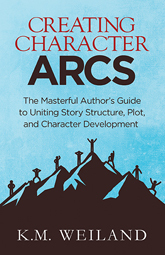
Creating Character Arcs (Amazon affiliate link)
Vibrant character voices arise out of vibrant characters. If the voice isn’t working, then the problem may be the foundational issue of the characters themselves. It’s hard to write zippy dialogue for pancake characters. Therefore, gaining a better understanding of your characters is one of the best places to start in creating their voices. The fortunate flipside of this is that if you can come up with an engaging voice for a pancake character, you’re automatically more than halfway to fixing all of that character’s problems.
As you begin contemplating (or troubleshooting) your character voices, keep the following nine aspects in mind. All will influence how the characters speak—and what they speak about.
1. PersonalityOften, when we think of voice, the first connotation is that of personality in its most general sense. You can approach personality in many ways, including via personality theory systems such as MBTI and the Enneagram (which we discussed earlier this month).
For starters, however, simply consider your characters’ most defining traits.
Are they extroverted or introverted?Quiet or boisterous?Idealistic or cynical?Kind or cruel?One question I always ask when interviewing my characters during their initial development is, “What is the first thing people notice about this character?” Voice will both influence and be influenced by the answer.
2. StanceNext, you can consider what, in Enneagram terms, is called your character’s “stance.” This has to do with your character’s preferred directional attitude when dealing with the world. This will influence not just what your character says, but when she chooses to speak, and whom she is most likely to engage with.
Is your character:
1. Aggressive (with a forward emphasis, focusing on the future and moving toward conflict)?
2. Withdrawn (with a backward emphasis, focusing on the past and stepping back from conflict)?
3. Dependent (with a lateral emphasis, focusing on the present and reaching out to others for support in conflict)?
(For those interested in the Enneagram connection, the aggressive types are Three, Seven, and Eight; the withdrawn types are Four, Five, and Nine; and the dependent types are One, Two, and Six.)
3. Harmonic Style
The Wisdom of the Enneagram by Don Richard Riso and Russ Hudson (affiliate link)
Another useful Enneagram categorization is that of a character’s harmonic style. In their book The Wisdom of the Enneagram, Don Richard Riso and Russ Hudson explain:
The Harmonic Groups tell us how we cope with conflict and difficulty: how we respond when we do not get what we want. … They reveal the fundamental way that our personality defends against loss and disappointment.
This is specifically useful to know in weighing what your characters most value in themselves and how they will try to communicate this through their dialogue.
Does your character respond most often with:
1. Competence (looking for logical and practical solutions and answers)?
2. Reactivity (pushing back proactively in the moment to make space before stopping to consider other options)?
3. Positivism (choosing to look at the bright side and putting a positive spin on things whenever possible)?
(For those interested in the Enneagram connection, the competent types are One, Three, and Five; the reactive types are Four, Six, and Eight; and the positive types are Two, Seven, and Nine.)
>>Click here to read “5 Ways to Use the Enneagram to Write Better Characters“
4. Defensive ReflexDialogue in a story can be viewed as a sort of contest between characters, especially since much of it will be conflict driven. One character goes on the offense; the other defends; and back and forth they go. In designing character voices, it is particularly valuable to consider each character’s default defensive reflex. These reflexes will be interrelated with a character’s stance and harmonic group (above) but can also be more specific.
Does your character:
Blush and go silent?Get mad and push back?Respond calmly while boiling on the inside?Flare up at first, then calm down and apologize?Give the benefit of the doubt and hold space?Judge immediately and feel offended?5. AgeOther factors in creating your characters’ voices are more practical. How old is this character? A five-year-old will obviously have an entirely different vocabulary, cadence, and conversational style than will a high schooler or a retiree.
6. EducationBy the same token, consider the character’s level of education. A professor or scientist will speak very differently from someone who dropped out of high school. Depending on the character’s self-consciousness around his level of education (whether very high or very low), this may also influence how he tries to speak.
For example, someone with several doctorate degrees might be arrogant in showing off his vocabulary or self-deprecating in trying not to rub his intelligence in others’ faces. Alternatively, someone with little education may try to cover it up by speaking more properly than her background suggests—to various effects.
7. RegionWhere is your character from and what is his ethnic and geographic background? A character who was born in India but lives in New York City will present interesting layers within his communication style. A character’s regional history may also suggest to you interesting word choices. The slang in South Boston is not the same as in London, which is not the same as that in the dales of Scotland or the ranch country of Texas.
8. DialectRegional considerations will not always include dialect, but when a dialect is appropriate, you will be presented with both new challenges and new opportunities for your characters’ voices. On the one hand, you will need to portray the dialect accurately, both in respect to those who actually speak it and because readers will spot and reject inauthenticity. On the other hand, a colorful dialect done well can instantly elevate a character and her voice to a whole new level of interest and memorability.
9. ProfessionFinally, consider your character’s job. Every profession, no matter how humble, offers its own unique way of speaking. Particular slang as well as specialized industry terms may creep into your character’s voice or even entirely permeate it, depending on his level of occupational immersion.
5 Solid Tools to Create Unique Character VoicesOnce you have examined your characters from every angle and considered what about them offers opportunities to distinguish their voices from one another’s, you can level up by employing several useful tools. To be effective, all of these tools must be used deftly. To choose one particular tool and to use it in every dialogue exchange may well push the effect from “original and memorable” to “cartoonish and self-indulgent.”
All of these tools are meant to be used to achieve verisimilitude. They’re here to help you create characters who are larger-than-life but who sound real. The moment a character’s dialogue begins to sound repetitive or rehearsed, you’d do better to dial back on the originality and let them talk just like everybody else for a bit.
I’m going to use the characters in Stranger Things for examples, since I feel the show does a particularly good job creating unique character voices for every member of its cast.
1. Dialogue TicsThe easiest way to bring individuality to a character’s speech is to create a dialogue tic that is used only for that character. This could be almost anything.
It could be a favored word (or a word the character refuses to use).It could be a character’s favored volume for speaking.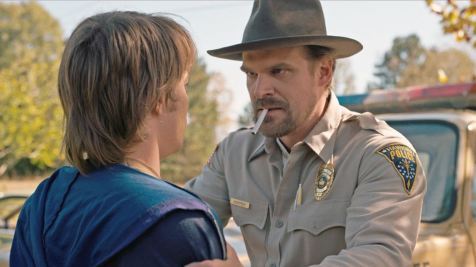
The character voice of Hopper, in Stranger Things, is defined by the fact that he can’t help but holler in almost every encounter, even when he’s trying to dial it down.
It could be how many words a character chooses to use or not use.
Your character could be a blabber who can’t stop talking or monosyllabic like Eleven in early episodes of Stranger Things.
2. Personalized Slang/Swears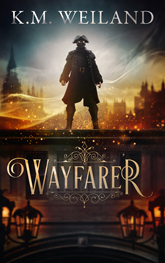
Wayfarer (Amazon affiliate link)
A easy way to slip a little originality into each character’s voice is to exclusively assign a specific bit of slang or a favorite swear word or euphemism to each character. Not only will this mark each character in your audience’s minds, but it can also be an opportunity for characterization.
As a personal example, in my Regency-era gaslamp fantasy Wayfarer, I kept a list of which words each character used. My country-boy protagonist Will would constrain his outbursts to terms such as “ruddy” and “hang it,” while my eight-year-old Cockney pickpocket would let loose with all the historical slang available to her.
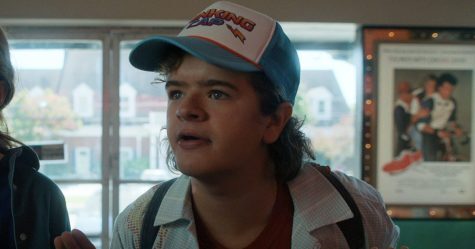
In Stranger Things, it’s interesting to note how the writers utilized swear words to influence character voices—purposefully giving more profanity to the child characters than the adults and more of them to Dustin’s bodacious character than to anyone else.
3. Metaphor Families
Secrets of Story by Matt Bird (affiliate link)
When discussing dialogue in his book Secrets of Story, Matt Bird recommends what he calls “metaphor families.”
The aspect of your characters’ lives that determines which metaphors, curses, and exclamations they use. The source of this is usually their job, their home region, or their psychological state. More rarely, it’s their career ambition or a hidden proclivity.
Even if all your characters come from the same place, family, or job, you can still craft each character’s dialogue around unique analogies that offer glimpses of the character’s perspective as well as bringing overall color to the dialogue.
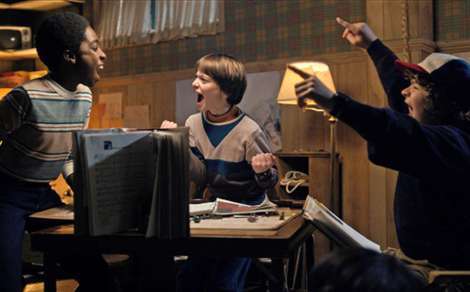
A defining aspect of Stranger Things is its use of Dungeons & Dragons terminology as a metaphor for the mysterious happenings in Hawkins, Indiana. Although other characters pick up on some of this terminology as the story progresses, it is mostly confined to the character voices of the four boys who play the game. Even amongst the boys, some of the characters, such as Dustin, tend to have a deeper understanding of the D&D lore and therefore use the language more fluently.
4. CatchphrasesA catchphrase is a word or phrase repeated by a character throughout the story. This could be a simple exclamation, such as “Zounds!”, or it could be a more meaningful statement that grows in importance the more it is uttered (such as Captain America’s “I could do this all day”).
Catchphrases can be a double-edged sword. On the one side, they can help make a character’s voice memorable. On the other, they can quickly feel overdone. Used cautiously, however, they can lend definition to a character’s voice in a story.

In Stranger Things, Eleven’s limited vocabulary in the story’s beginning lends itself well to her repeating certain phrases—such as “Friends don’t lie”—which take on meanings unique to her character and context as the story expands.
5. Rhythms and PhrasingsAlthough the above tools and considerations are valuable in crafting character voices that pop off the page, they’re ultimately all window dressing. The truth of a character’s voice is found not just in the choice of individual words, but in the construction of the dialogue’s rhythm and phrasings.
Does your character:
Ramble in run-on sentences (like Anne of Green Gables)?Speak in clipped, staccato fragments?End statements decisively, challengingly, or open-endedly?More than any other tool in your toolbox, this is the one that will allow you to create truly unique and vibrant character voices. Try to make the way every character speaks slightly from every other character. One character may be posh and refined, using perfect grammar. Another may be nearly incomprehensible with dropped consonants and obscure slang. Everything about the character—from background to emotionality—will determine how the voice comes across on the page.

Stranger Things employs different cadences and styles for all of its character voices, as evidenced by the differences in the four boys. Dustin tends to ramble with enthused intelligence, Mike goes off on emotional rants, and Will holds back, while Lucas, as the voice of reason (and sometimes cynicism), always speaks forcefully, is always hyper-practical, and always gets to the point.
***
Apart from more general concerns of crafting the shape of your story through plot, arguably nothing affects your audience’s perception of your story more than voice. This applies, of course, to the narrative voice—but the narrative voice will, in turn, be impacted by the POV characters’ dialogue voices as well. The more distinctive, appropriate, and authentic each character’s voice is, the more these descriptors will apply to your story as a whole.
Wordplayers, tell me your opinions! How would you describe the character voices in your work-in-progress? Tell me in the comments!Click the “Play” button to Listen to Audio Version (or subscribe to the Helping Writers Become Authors podcast in Apple Podcast or Amazon Music).
___
Love Helping Writers Become Authors? You can now become a patron. (Huge thanks to those of you who are already part of my Patreon family!)The post Top 14 Tips and Tools for Creating Unique Character Voices appeared first on Helping Writers Become Authors.
October 24, 2022
How Writers Can Infuse Mood in Story Settings
 Note From KMW: Mood will influence every moment of your story. It will create (and be created by) your story’s tone. It will determine the nuances of your story’s narrative voice. And it will help create both pacing and foreshadowing, by guiding readers to experience and anticipate what you want them to.
Note From KMW: Mood will influence every moment of your story. It will create (and be created by) your story’s tone. It will determine the nuances of your story’s narrative voice. And it will help create both pacing and foreshadowing, by guiding readers to experience and anticipate what you want them to.
Naturally, this only works when you are aware of what you want your story’s mood to be, how to create that mood, and how to choose the right mood for each moment in your story.
Today, I’m pleased to host a post from author, editor, and writing coach C.S. Lakin (of Live Write Thrive), who offers some pointers on how your story’s setting, specifically, is important to framing mood in every scene.
Check it out!
***
Every person or character, at any given time, is in a particular mood. Generally, mood is a person’s state of mind, but it’s more than that. Mood can also describe the disposition of a collective of people, a certain time in history, or the essence of a place.
Regardless what kind of mood we speak of, it’s always subjective. Ten people can be experiencing the same event at the same place and time, yet depending on their perspectives, their individual mood will differ.
It’s easy to think of a setting as a fixed element. Paris is Paris, right? While the location itself may be fixed, the city can look vastly different when certain variables are altered. The time of day, the weather, the season, and what a character is dealing with can make a setting look very different than it did just the day before. And no factor has more influence over the setting than mood.
The Purpose of the Scene Determines the MoodThis is important for fiction writers to keep in mind, because a story is populated by characters who have core needs, fears, hopes, and problems. In conveying a character’s mood in a scene, setting is a crucial component. Before a writer can “set the mood,” the purpose of the scene needs to be thought through carefully.
We all know about moods and have a range of them we express and feel, whether we’re aware of them or not. We can sense others’ moods just as they can sense ours. The mood of the character should affect the way he perceives his environment, and expert writers will carefully choose words and imagery that act like a mirror to the character’s emotions.
It’s a reciprocal factor: mood informs how the character sees the setting, but the setting also informs the character’s mood—shifting it or intensifying it.
Your story may have an overall tone or mood, but every scene is a micro-system of mood that depends on the emotional state and mindset of your character. When you plot out your scene, you need to first think about how your character will interact with the setting based on her mood and the purpose of your scene.
It’s the purpose of the scene that determines all the setting elements—what you choose to have the characters notice (and not notice) and react to and why.
The Importance of WordsmithingSimply, mood is created by words. By carefully chosen words.
What makes a novel or short story shine with brilliance is the choice of words and phrases that evoke not just an effective sensory experience but makes readers fall in love with the writing.
Take a look at this hastily written sentence:
Bill walked through the forest until he found a cottage set back in the trees.
Now consider the reworked description below, which I spent a bit more time on:
Bill slogged along the leaf-choked path, the spindly arms of the bare maples quivering in the cold autumn wind—a feeble attempt to turn him back. He pressed on until he spotted, nestled in a copse of willows, the derelict cottage slumped like a lost orphan, the lidless windows dark and vacant. Hardly a welcoming sight after many tiresome hours of travel.
A specific mood is created by bringing out Bill’s mindset and emotional state. Without knowing anything else about this scene (if I’d written one), readers can clearly sense the purpose of the action by the things they notice and the words used to describe those things.
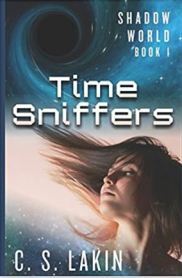
Time Sniffers by C.S. Lakin (affiliate link)
In my YA sci-fi novel Time Sniffers, Bria arrives at the site where it seems an explosion took place that possibly killed her mother. Notice the stark imagery and use of the Martian landscape as simile—which is appropriate for teenage Bria because her father is a scientist that works on Mars missions.
Rotating lights splattered the air in eerie shafts of blue and red. An acrid taste coated my mouth. Dad leapt from the car and ran into obscurity.
I opened my door, hesitating, fingering the handle. I strained to see past the haze and gloom, struggled to use some inner eye to find clarity and explanation—in both my real and mental worlds. No one would talk to me; they hurried past me as if I were invisible. And then a light breeze kicked up, and I squinted, grit pelting my eyes.
When my hair stopped whipping my face and the stinging lightened, I opened one eye and peeked out. My breath caught in my chest, and a lump the size of a grapefruit lodged in the back of my throat.
The laser lab—acres of buildings, equipment, and personnel—was gone. Not demolished into piles of concrete rubble and twisted steel girders, like you see on TV surveying the aftermath of an earthquake.
Just . . . gone.
A gray dust spread across the ground for blocks on end, like a peculiar sandbox of wavering dunes made of fine dust that kicked up in whorls with the slightest disturbance. A Martian landscape, like the photos Dad had pinned on his office wall. Desolate, barren wasteland. …
The rest of the afternoon blurred. Dad coming back to the car, talking to one person after another, huddling in conversation. Dylan unmoving in the backseat, someone running to the car and smothering me in a hug, babbling, crying, stroking my hair (which I really hate). My eyes stinging and itching, my skin coated in gray dust—the dust making everyone around me look like zombies emerging out of the earth.
Every word in the scene is chosen carefully to paint a mood in gray, leeched-out tones, which both mirrors and influences Bria’s mood and reaction to what she experiences.
Once you’re certain about your scene’s purpose and the mood you need to create, try to make every word count and stretch your creativity to come up with strong, evocative verbs and adjectives. Play around with imagery and metaphor.
One great way to get inspired is to search for poems by topic (try PoetryFoundation.org), and read how poets evoke certain subjects or elements, like colors or seasons. Here’s an example I just pulled up by searching poems for the word dust. This is part of a poem by that name by Dolores Cairns:
Dust …
Swirling in endless garlands over a white road in the wind;
Settling in deliberate silence on the unused furniture
Of an old house;
Little heaps of dust under shabby tombstones;
Dropping multitudinously upon the earth:
Rocks, trees, mountains, animals, people, palaces, nations.
Poetry paints word pictures. Let your imagination spark by reading poems that have elements of your scene. When plotting that Time Sniffers scene, I could have looked up Mars, wind, rubble, earthquake, gray, ashes … you get the point. After reading some poems, try freewriting the ideas swimming in your head. I have no doubt you will then be able to bring more vibrancy and originality into your setting.
Infusing mood into your fiction will bring your setting to life. If you consider the purpose of your scene, the mindset and mood of your character, and use evocative words and imagery to reflect and inform that mood, you’ll immerse your reader in a rich sensory experience.
Want to master crafting powerful settings? Enroll in C. S. Lakin’s new online video course for techniques and exercises to evoke settings that will immerse your readers. You can find all her online courses for fiction writers at Writing for Life Workshops on cslakin.teachable.com.
Wordplayers, tell me your opinions! What mood are you wanting to evoke in your latest scene? Tell me in the comments!The post How Writers Can Infuse Mood in Story Settings appeared first on Helping Writers Become Authors.
October 17, 2022
9 Negative Character Arcs in the Enneagram
 The Enneagram personality theory is a wonderful tool for writers. Beneath the surface of the system’s nine types, you can find development guides that include all the working parts of solid transformational character arcs. Last week, we discussed the positive character arcs in the Enneagram. Today, we’re going to look at the flipside: nine negative character arcs in the Enneagram system.
The Enneagram personality theory is a wonderful tool for writers. Beneath the surface of the system’s nine types, you can find development guides that include all the working parts of solid transformational character arcs. Last week, we discussed the positive character arcs in the Enneagram. Today, we’re going to look at the flipside: nine negative character arcs in the Enneagram system.
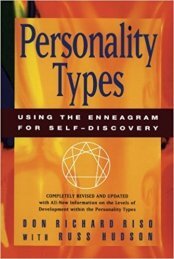
Personality Types by Don Richard Riso and Russ Hudson (affiliate link)
As a personal-development tool, the Enneagram can help us identify, first, which of the nine types best suits our own tendencies. From there, we can use it to bring awareness to any number of our own pain points, growth factors, and potential blind spots.
But there’s much more to the Enneagram than just that. Particularly as presented by Don Richard Riso and Russ Hudson in their groundbreaking book Personality Types, the Enneagram also offers several vertical maps of progression and regression within each type. In short, it can offer hints as to where someone (ourselves or our characters) may be sitting within a spectrum of mental and emotional health.
>>Click here to read “5 Ways to Use the Enneagram to Write Better Characters”

Creating Character Arcs (Amazon affiliate link)
For our personal use, the Enneagram can help us move higher up the ladder toward optimal health—to achieve positive character arcs. That’s what we looked at last week. As authors, however, we also sometimes need to write about characters who are headed in the opposite direction—away from health. In character-arc speak, the thematic movements of a positively arcing character will be away from a Lie or limiting belief and toward a more expansive and liberating Truth. Meanwhile, a negatively arcing character will be moving away from the story’s posited thematic Truth.
9 Negative Character Arcs in the Enneagram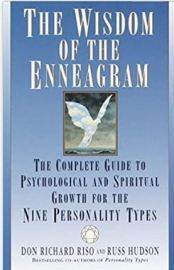
The Wisdom of the Enneagram by Don Richard Riso and Russ Hudson (affiliate link)
If you’re unsure what character arc and theme you want to explore in your story, the Enneagram can help you identify the character arcs—both positive and negative—that are most organic to certain personality types. As I discussed in the last post, the Enneagram system is a deep well to dive into, full of many complexities. What’s in this post is the barest ripple on its surface, based on my years’ long personal study and growth within the system and particularly on the type comparisons and descriptors found in Riso and Hudson’s book The Wisdom of the Enneagram.
In that book, they introduce the Enneagram like this:
The core truth that the Enneagram conveys to us is that we are much more than our personality. Our personalities are no more than the familiar, conditioned parts of a much wider range of potentials that we all possess.
The nine personality types of the Enneagram.
Today, we’re going to take a quick look at the dark side. What happens when someone—a character in your story—is unable to move beyond the limiting beliefs ingrained in his personality? What if, in fact, this character gives in to his fears, pains, delusions, and shadows? The result will be a negative character arc (whether large or small). Following are key things to keep in mind about the possible devolution of each of the nine Enneagram types, should you choose to use them in your stories.
(As mentioned in the previous post, if you’re interested in further study, I also recommend the books The Road Back to You by Ian Morgan Cron and Suzanne Stabile and The Complete Enneagram by Beatrice Chestnut, as well as these authors’ respective podcasts “The Enneagram Journey” by Suzanne Stabile and “Enneagram 2.0” by Beatrice Chesnut and Uranio Paes. Stabile’s interview with Russ Hudson, “The 9 Virtues and Passions,” is a great place to start diving into the deeper aspects of the theory.)

 1. The Reformer’s Negative Arc: From Resentment to Tyranny
1. The Reformer’s Negative Arc: From Resentment to TyrannyCore Truth the Character Fails to Believe: “You are good.”
Type Ones’ native desire to bring integrity to themselves and the world around them can become complicated by an unconscious fear that they are, in fact, inherently bad or corrupt in some way. This pushes these characters toward perfectionism, first in small ways, and then, if unchecked, into an obsessive tyranny that desires to control others as well. An early sign this character may be at the beginning of an arc (whether positive or negative) is their tendency to judge or condemn both themselves and others.
This may lead them further into the Lie that they are personally responsible or obligated to fix “everything.” If these tendencies are left unchecked, Ones may begin manipulating others by offering “correction” that attempts to bring others into line with their own personal beliefs and standards. In cases of extreme unhealth, they may end up projecting all the “badness” they fear in themselves onto others and taking it upon themselves to mete out punishment.

Type One: R’as Al Ghul in Batman Begins (all character examples typed by Charity Bishop of the great personality Tumblr Funky MBTI Fiction).
2. The Helper’s Negative Arc: From Pride to ManipulationCore Truth the Character Fails to Believe: “You are wanted.”
Type Twos’ native desire to love and be loved can become complicated by an unconscious fear that they are, in fact, unworthy of love. Defensively, these characters then begin to over-give to others and to over-value this service (a source of “pride”), as they conflate the “need to be needed” with their true need of love. If unchecked, this need to be recognized by others can devolve into outright manipulation of others’ needs and emotions. An early sign that this character may be at the beginning of an arc (whether positive or negative) is their tendency to under-value their own needs at the expense of others’.
This may lead them further into the Lie that they must give more and more in order to win the admiration, approval, and love of others. If these tendencies are left unchecked, Twos may begin manipulating others by seeking to create dependencies—making themselves indispensable so others “cannot live without them.” In cases of extreme unhealth, they may end up projecting all the “unlovedness” they fear in themselves onto others, causing others to feel they too are unworthy unless they can, in turn, prove their love to the Two.

Type Two: Cynthia Kirkpatrick in Wives and Daughters by Elizabeth Gaskell
3. The Achiever’s Negative Arc: From Vanity to GrandiosityCore Truth the Character Fails to Believe: “You are loved for yourself.”
Type Threes’ native desire to offer value to the world can become complicated by an unconscious fear that they are, in fact, without inherent value–that their only value is what they do, not who they are. Defensively, these characters then begin to chase after success and external affirmation as a way of pumping up their own self-image. If unchecked, this image-consciousness can devolve into delusions of grandeur. An early sign this character may be at the beginning of an arc (whether positive or negative) is their tendency to hide their authentic selves by trying to become an “ideal.”
This may lead them further into the Lie that they must climb higher and higher on the ladder of power, prestige, and success. If these tendencies are left unchecked, Threes may begin manipulating others by adopting whatever mask will be most acceptable or charming, allowing them to push toward their own end goals. In cases of extreme unhealth, they may end up arrogantly projecting all the unworthiness they fear in themselves onto others, believing they are better than others and treating them with contempt.
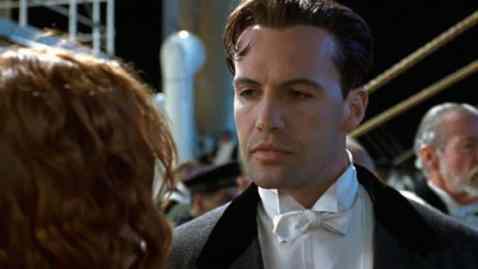
Type Three: Cal Hockley in Titanic
4. The Individualist’s Negative Arc: From Envy to Self-ObsessionCore Truth the Character Fails to Believe: “You are seen for who you are.”
Type Fours’ native desire to be authentically themselves can become complicated by an unconscious fear that they have no true personal significance or identity. Defensively, these characters then begin to hide behind a victim mentality that leads them to envy the “perfect” lives of others, or to hide behind romantic daydreams about what their lives could be. If unchecked, this envy can devolve into self-indulgence and self-obsession. An early sign this character may be at the beginning of an arc (whether positive or negative) is a tendency to turn inward, refusing to move past injuries and even seeking to intensify their feelings.
This may lead them further into the Lie that they are somehow too special or unique for the rest of the world to ever understand or appreciate. If these tendencies are left unchecked, Fours may begin manipulating others by becoming more and more temperamental, demanding others treat them with kid gloves. In cases of extreme unhealth, they may end up projecting the fear that they are “nobodies” onto the world around them, treating others with disdain.

Type Four: Emma Bovary in Madame Bovary
5. The Investigator’s Negative Arc: From Avarice to ReclusionCore Truth the Character Fails to Believe: “Your needs are not a problem.”
Type Fives’ native desire for competency and usefulness can become complicated by the unconscious fear that they lack the ability to interface with the world. Defensively, these characters then begin to conserve their personal resources (“avarice”), believing the world will demand too much from them. If unchecked, this lack mentality can devolve into self-imposed isolation. An early sign this character may be at the beginning of an arc (whether positive or negative) is their tendency to overthink their own personal experiences and to value the subjective over the objective.
This may lead them further into the Lie that they cannot risk giving away too much of themselves—their time, their energy, or their expertise—to an unappreciative and unrewarding world. If these tendencies are left unchecked, Fives may begin manipulating others by detaching emotionally and retreating into their own preoccupations. In cases of extreme unhealth, they may end up projecting their fear of their incompetence onto the world around them, in turn making others feel stupid.

Type Five: Saruman in The Lord of the Rings
6. The Loyalist’s Negative Arc: From Anxiety to DogmatismCore Truth the Character Fails to Believe: “You are safe.”
Type Sixes’ native desire for safety and security can become complicated by the unconscious fear that they are unable to offer themselves the support and guidance they need in order to feel safe. Defensively, these characters then begin to increasingly rely on external authorities and systems of belief. If unchecked, their anxiety can devolve into a frantic adherence to dogma. An early sign this character may be at the beginning of an arc (whether positive or negative) is the tendency to make themselves dependent on people or systems who are “stronger” than themselves.
This may lead them further into the Lie that they are incapable of thinking for themselves or even taking care of themselves without external aid. If these tendencies are left unchecked, Sixes may begin manipulating others by complaining and testing their loyalties. In cases of extreme unhealth, they may end up projecting their fears onto the world around them, in turn undermining the strength and faith of others, seeking to render them helpless.

Type Six: Elizabeth Poldark from Poldark
7. The Enthusiast’s Negative Arc: From Gluttony to EscapismCore Truth the Character Fails to Believe: “You will be taken care of.”
Type Sevens’ native desire for happiness can become complicated by an unconscious fear that they are, in fact, likely to suffer deprivation or pain. Defensively, these characters fixate on seeking positive experiences (to the point of “gluttony”) and avoiding any and all negative experiences. If unchecked, this desire for fun and abundance can devolve into hedonistic escapism. An early sign this character may be at the beginning of an arc (whether positive or negative) is the tendency to fixate on a happy future (to the exclusion of the past or present) by counting down their lives to the “next good thing.”
This may lead them further into the Lie that their best life is always someplace else, over the horizon, and just out of reach. If these tendencies are left unchecked, Sevens may begin manipulating others by distracting them from “real” issues or from negative situations they do not wish to acknowledge. In cases of extreme unhealth, Sevens may end up projecting their fear of being trapped onto the world around them, in turn making others feel trapped or deprived in some way.

Type Seven: Alexei Kirillovich Vronsky in Anna Karenina
8. The Challenger’s Arc: From Intensity to ViolenceCore Truth the Character Fails to Believe: “You will not be betrayed.”
Type Eights’ native desire to feel protected and self-sovereign can become complicated by the unconscious fear that they are vulnerable to being controlled or harmed by others. Defensively, these characters push back as a way of feeling their own strength and invulnerability. If unchecked, this desire to feel safe via the intensity of their own experiences can devolve into reflexive aggression. An early sign this character may be at the beginning of an arc (whether positive or negative) is the tendency to try to forcefully control everything and everyone in their lives.
This may lead them further into the Lie that they must struggle in order to accomplish anything. If these tendencies are left unchecked, Eights may begin manipulating others by exerting dominance over them and using force (even if just the force of intense personality) to get others to comply with their demands. In cases of extreme unhealth, they may end up projecting their fear of being harmed or controlled onto the world around them, in turn bullying others into submission.

Type Eight: Katherine Pierce in The Vampire Diaries
9. The Peacemaker’s Negative Arc: From Apathy to DisassociationCore Truth the Character Fails to Believe: “Your presence matters.”
Type Nines’ native desire to be at peace with everyone and everything can become complicated by an unconscious fear that they are, in fact, irreparably separate from others. Defensively, these characters sink into lethargy and apathy as a means of avoiding the pain of conflict. If unchecked, this desire to avoid conflict can devolve into a failure to stand up for themselves or issues they believe in. An early sign this character may be at the beginning of an arc (whether positive or negative) is the tendency to avoid allowing themselves to feel impacted or affected by their experiences of the world.
This may lead them further into the Lie that in order to avoid the further separation they feel when in disagreement with others, they should suppress their own needs and identities to avoid conflict. If these tendencies are left unchecked, Nines may begin manipulating others through passive resistance and by ignoring the realities of certain situations. In cases of extreme unhealth, they may end up projecting the fear that they will lose connection with others onto the world around them, in turn cutting off connection with those who love them.

Type Nine: Tommen Baratheon in Game of Thrones
***
The seeds for negative character arcs in the Enneagram are just as rich as are those for positive arcs. It’s important to note that although these negative tendencies represent core struggles for the types, the presence of these traits or inclinations are not, in themselves, indications someone is on a “negative arc.” Indeed, as noted throughout, the negative aspects of a type will be present at the beginning of both negative arcs and positive arcs.
Whether you choose to take your characters on a positive journey out of their shadow selves or on a negative journey deeper into their darkest possibilities is up to you and the stories you’re wanting to tell.
For more on the deep complexities of each type’s development and potential, I recommend checking out some of the wonderful resources mentioned above.
Wordplayers, tell me your opinions! Do you think you might ever write one of the negative character arcs in the Enneagram? Tell me in the comments!Click the “Play” button to Listen to Audio Version (or subscribe to the Helping Writers Become Authors podcast in Apple Podcast or Amazon Music).
___
Love Helping Writers Become Authors? You can now become a patron. (Huge thanks to those of you who are already part of my Patreon family!)The post 9 Negative Character Arcs in the Enneagram appeared first on Helping Writers Become Authors.
October 14, 2022
Check Out the NaNoWriMo Writing Bundle
This month, I’m participating with Humble Bundle in a special book promotion themed around National Novel Writing Month (or NaNoWriMo).
Here’s how it works.
I’m offering my five most popular writing guides (listed below) in a bundle that also includes nine books from other authors. You can choose from three different bundle sizes, each including a different number of books.
The entire bundle of sixteen books asks for a minimum donation of $18. The smallest bundle of two books is just $1.
You can decide if you want to offer more. Five percent of the purchase price will be donated to the non-profit organization behind NaNoWriMo, which has inspired and aided so many writers over the years.
My books in the bundle:
Outlining Your NovelStructuring Your NovelCreating Character ArcsWriting Your Story’s ThemeOutlining Your Novel WorkbookBooks by other authors:
Wonderbook: The Writer’s Guide to Creating Imaginative FictionWriting Sci-Fi and FantasyWriting ActionWriting HumorWriting CharacterWriting DialogueWriting MemoirThe Truth About WritingStay Inspired: Finding Motivation for Your Creative WorkLiving Color: Painting, Writing, and the Bones of SeeingDo It For YourselfIf you’ve been thinking about grabbing some of my books, this is a great opportunity to also send a little support toward NaNoWriMo, as an important cornerstone of our writing community. Click here to find out more.
The post Check Out the NaNoWriMo Writing Bundle appeared first on Helping Writers Become Authors.












